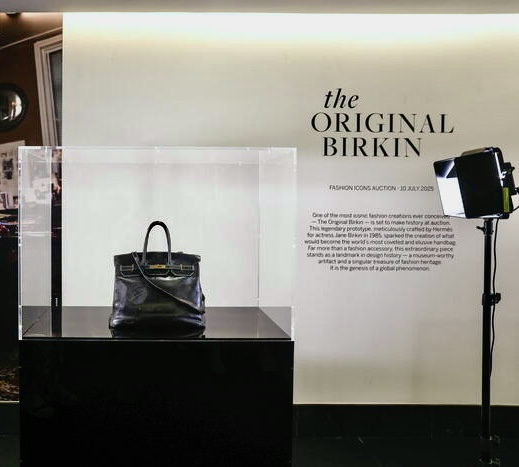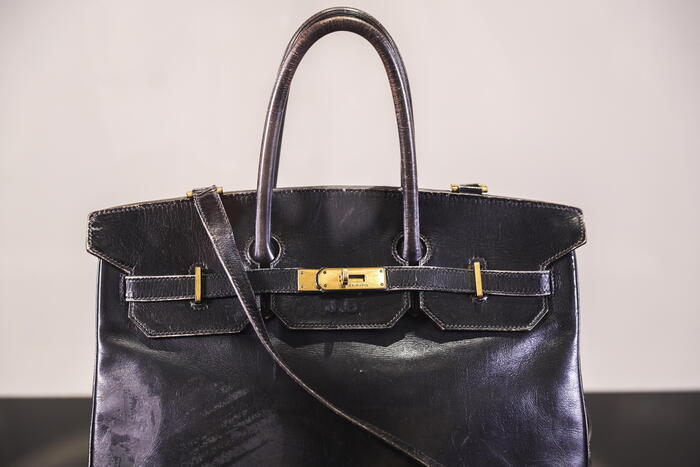Jane Birkin’s personal Birkin bag was sold for seven million euros plus auction fees in the ‘Fashion Icons’ sale organized by Sotheby’s. Held in Paris, the auction set a record for a fashion accessory of this kind, underscoring the cultural and symbolic importance of the model created by Hermès in 1984.
The piece is considered unique: the very first Birkin ever made, custom-designed for the Franco-British actress and singer. Its origin traces back to a Paris–London flight in 1981, during which Jane Birkin, seated next to Hermès CEO Jean-Louis Dumas, lamented the lack of a bag that was roomy, elegant, and suited to everyday life. Mid-flight, Dumas sketched a concept on an airplane sick bag, an idea that would evolve into the Birkin bag. The design was finalized over the following months and, in 1984, the first prototype was delivered to Birkin, the bag sold at auction on Thursday.

This original model features seven distinctive details not found in subsequent iterations: a fixed (non-detachable) shoulder strap; hybrid dimensions, midway between the Birkin 35 and 40; handmade gilded brass hardware; closed metal rings like those on the HAC model; smaller base studs than those seen today; an Éclair zipper (prior to the Riri zips introduced in the 1990s); and the initials “J.B.” embossed inside the front flap.
The bag also bears signs of constant use — scratches, abrasions, and most notably, a nail clipper attached to the handles, a personal item Birkin always kept with her.
Over time, the Birkin has become a symbol of modern luxury. Crafted by hand from fine leather and precious materials, the bags are produced in limited quantities and often come with waiting lists exceeding 12 months. Prices start around €9,000–10,000 for the simplest leather models but can exceed €100,000 for versions made from crocodile or ostrich, or featuring precious metals and stones.
This Paris sale has refocused attention on the origin story of the iconic bag and on Jane Birkin’s pivotal role in its creation. It also highlights a growing interest in historical pieces linked to fashion and to the personalities who shaped its evolution.










